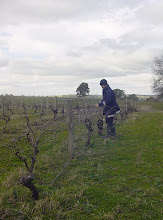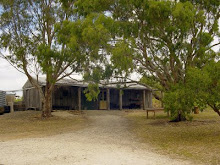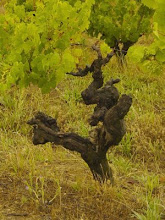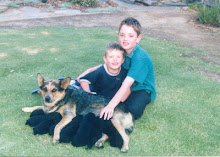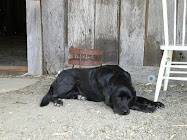During the past few months, we have had the pleasure of the company of some wonderful visitors to our home in this magnificent part of the Barossa Ranges, which my husband refers to as ‘God’s Country’. It’s so much fun to sit at the kitchen table in our old cottage, sharing fine wines and food, and getting to know each other ‘face to face’ as opposed to electronic or phone conversations.
Each of these visitors has their own special reason for arriving on our doorstep, or indeed, in our neighbourhood, and it’s their own diverse reasons that will create a segment of my Barossa Dirt posts. The four subjects are all very interesting people – two are in the wine business in the USA, the other two are from Sydney – one involved with the wine business and the other with journalism.
My first interview is with Carl Holm, who is a Sydney-based freelance journalist. He has a passionate interest in German history and has visited the Barossa twice in 2010.The photo above is of Carl (at right) with Don Ross, who is the Secretary of the Barossa Archives and Historical Trust. The photo was taken inside of the Barossa Museum.
ML – What was the initial reason for your first ever trip, or contact, with the Barossa, and what year was it?
CH - I was collecting audio material for a radio documentary for Radio Deutschewelle, Germany’s international broadcaster, in February 2010.
ML – Which Barossan personalities have made a lasting impression on you?
CH – Peter and Margaret Lehmann, because they are very funny and pull no punches. They also fire off of each other when you speak to them together.
ML – What are some other interesting places you have been to in your travels, and/or which interesting people have you met elsewhere in the world?
CH – I worked in Germany for three and a half years, and in the process fell in love with France. I also love the Czechs for their ‘gallows’ humour.
ML – Compared to some of these places, what makes the Barossa an appealing place to visit?
CH – The time that I spent in Germany gave me an interest to investigate the waves of German immigration and the Barossa Valley is part of that.
ML – What are your favourite Barossan places to visit and why?
CH – The smaller wineries that have exclusive products that are not readily available outside of the Barossa. I like visiting old churches and cemeteries. One day I would like to come back with a tent and a motorcycle and see it from a different perspective, again.
ML – Do you have any favourite Barossa foods or wines?
CH – Wines: Henschke Pinot Gris, Kies Family 2000 Dedication Shiraz. Food: The kangaroo fillet from the Tanunda Clubhouse.
ML – What is the appeal of Flaxmans Valley to you?
CH – The only banjos you hear of a night-time are the banjo frogs.
ML – Thank you, Carl for answering these questions, and for being a fan and advocate of the Barossa.
Cheers for now,
Marie Linke
Tiny URL for this post: http://tinyurl.com/2apmy43























